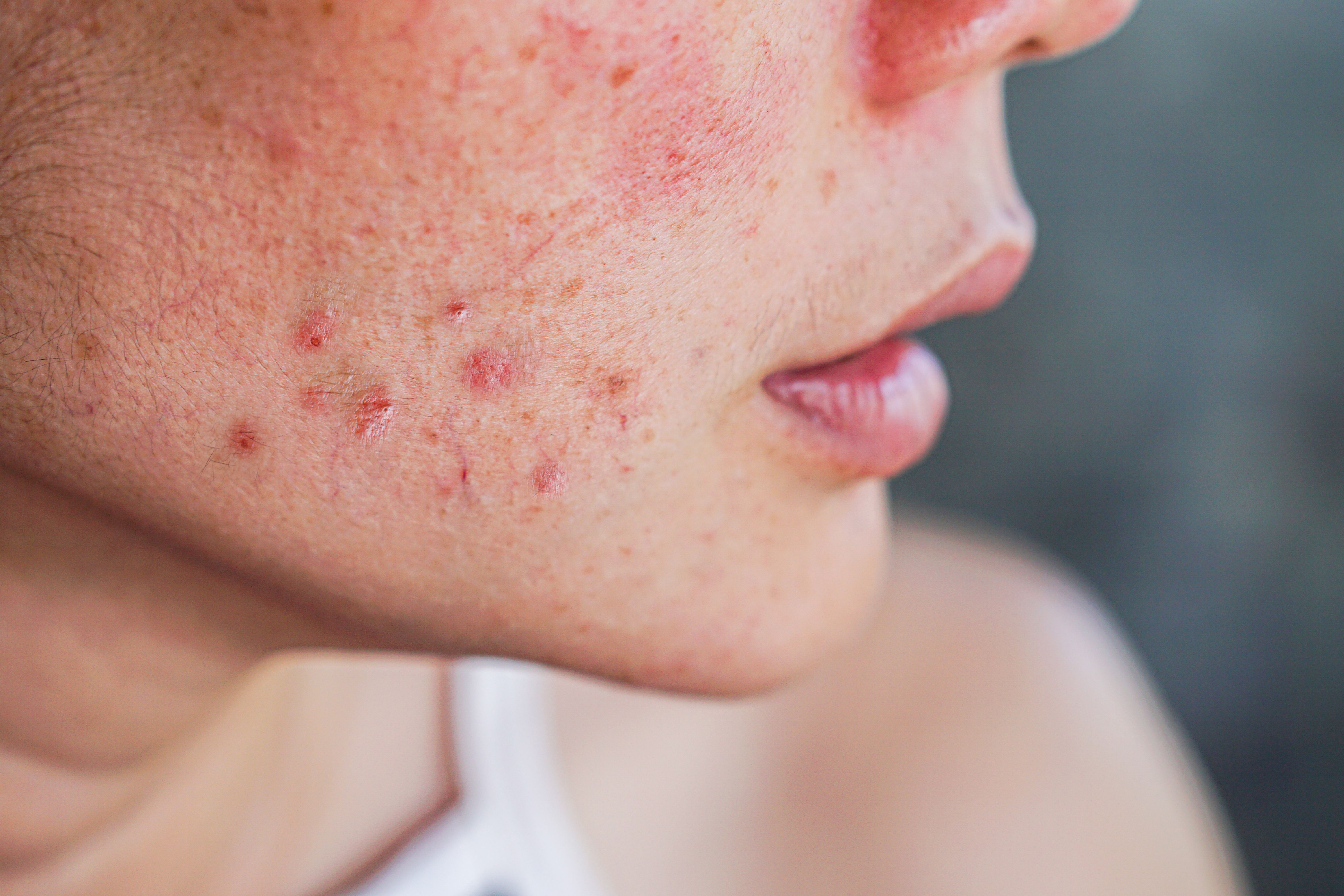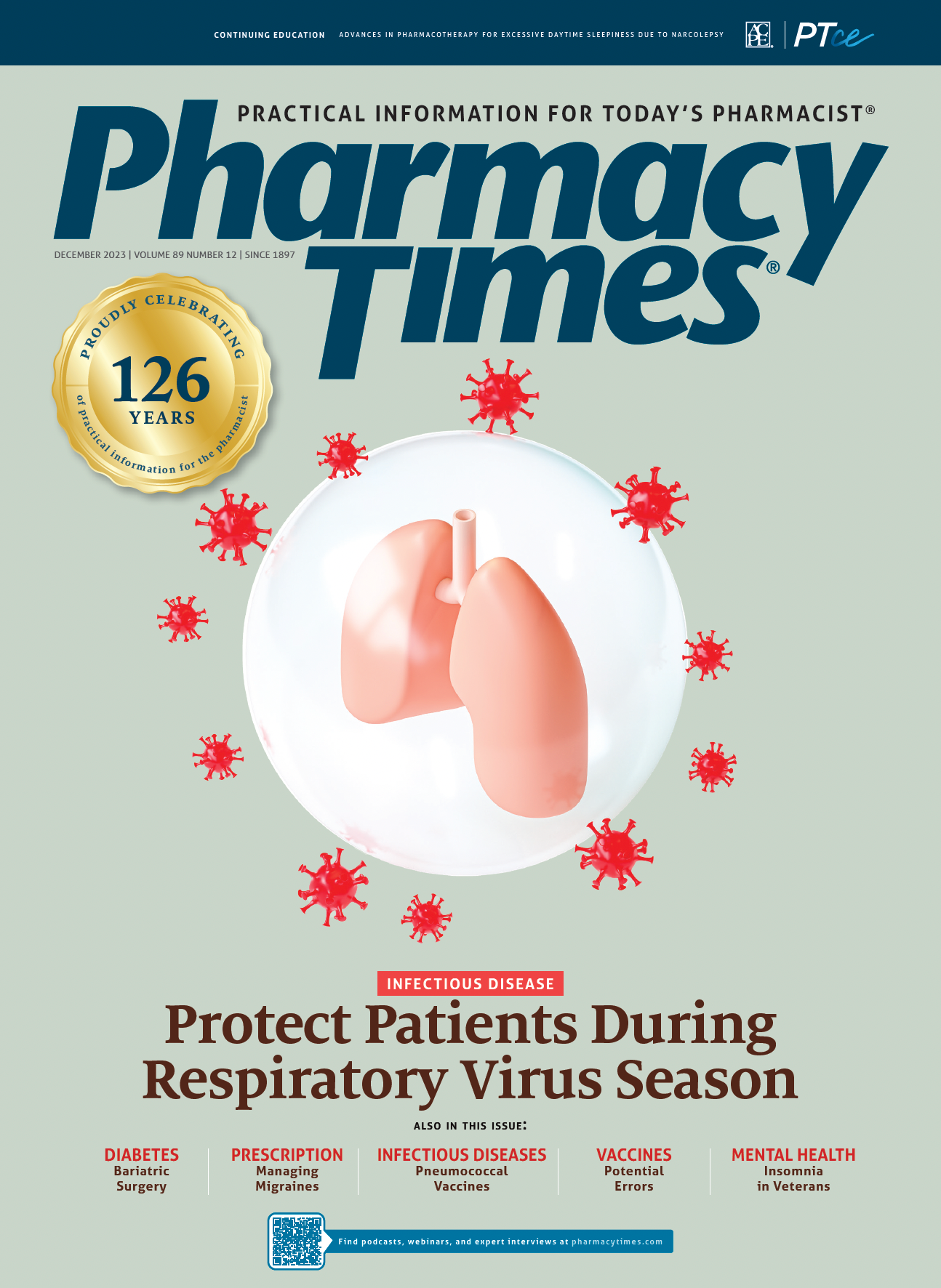Publication
Article
Pharmacy Times
OTC Case Studies: Skin Conditions
Author(s):
The cases focus on acne, atopic dermatitis and steroids, warts and wart remover, and athlete’s foot.
CASE 1: Acne
Q: KL is a woman aged 21 years who comes to the pharmacy to purchase OTC acne products, including a benzoyl peroxide cleansing wash and adapalene gel. KL explains that these were newly recommended by her dermatologist, and she is seeking the pharmacist’s input on expected adverse effects (AEs) of both products.
Image credit: Doucefleur | stock.adobe.com

What counseling points should the pharmacist provide to KL about the use of benzoyl peroxide and adapalene?
A: Benzoyl peroxide and adapalene gel are 2 topical products commonly used in combination for the management of acne. Benzoyl peroxide is a topical bacterial antiseptic used to eliminate acne-causing bacteria from the skin and is available in many OTC formulations, including topical washes, foams, creams, and gels, ranging in strength from 2.5% to 10%. AEs associated with topical benzoyl peroxide products include dry, irritated skin, which can be managed by frequent use of moisturizers; lower-concentration products; or limiting frequency to once daily or every other day. Additionally, KL should be counseled that benzoyl peroxide can cause bleaching of the skin, hair, and clothing, which can be minimized by using washable formulations such as cleansers.
Adapalene is a topical retinoid available over the counter as a 0.1% gel. AEs of adapalene are similar to benzoyl peroxide, including localized redness, dryness, peeling, and irritation. KL should be counseled that strategies to minimize these AEs include applying a pea-sized amount, avoiding sun exposure after application, using at bedtime, and/or consistently using a daily moisturizer. KL should be counseled that results are typically seen within 5 days of benzoyl peroxide use and 4 to 12 weeks of adapalene use. However, if acne is worsening or not improving, she should seek further guidance from her dermatologist.1
CASE 2: Atopic Dermatitis and Steroids
Q: KB is a woman aged 18 years who comes to the pharmacy and asks to speak to the pharmacist about a new rash that she noticed behind her knees and inner arms. The rash appears to be itchy, red, and inflamed. She mentions that she suffered from this type of rash as a child, but it improved as she became an adult. She is looking for something over the counter to help control the rash.
What OTC products and self-care strategies should the pharmacist recommend for management of atopic dermatitis?
A: KB should be educated about the importance of topical moisturizers in the management of atopic dermatitis. Topical emollients such as petrolatum-based products should be applied twice daily in a thin layer over the affected area to help hydrate the skin and maintain moisture. For short-term management of symptoms such as itchiness and inflammation, OTC topical corticosteroids such as hydrocortisone lotions, ointments, or creams can be considered. Additional counseling points to prevent worsening and recurrence of atopic dermatitis flareups include avoidance of triggers such as allergens and stress.2
CASE 3: Warts and Wart Remover
Q: PK is a man aged 22 years who comes to the pharmacy after his doctor advised him to pick up an OTC product to remove a wart that is on the bottom of his left foot. He mentions that he is a member of the local college swim team and spends most of his free time in the pool. He has never had a wart in the past and is asking the pharmacist whether there are any OTC products for wart removal.
How should the pharmacist respond to PK?
A: PK should use OTC topical salicylic acid products formulated for wart removal. Topical salicylic acid products for wart removal are available in many forms such as gels, liquids, and medicated pads. For all available products, PK should be counseled to first soak the area with warm water for 5 minutes and dry thoroughly. The product can then be applied to the wart directly and repeated once or twice daily until the wart is removed. The pharmacist should inform PK that wart resolution can take several weeks even with consistent application of salicylic acid products. He should be advised to keep the area clean and dry and avoid scratching. PK should also be advised to wear sandals in public spaces such as showers, locker rooms, and pools to prevent the spread of warts. The pharmacist should educate PK to seek advice from a dermatologist if the wart worsens, changes in appearance, or does not resolve with prolonged self-treatment.3
CASE 4: Athlete’s Foot
Q: NR is a man aged 19 years who comes to the pharmacy complaining of itchy, thickened, and malodorous skin localized to the bottom of his right foot. He noticed that it has worsened since joining the soccer team this year. NR called his primary care physician about his symptoms, who recommended he purchase OTC products for management of athlete’s foot. NR is asking the pharmacist’s advice for an appropriate OTC product to help manage his current symptoms as well as any ways to prevent recurrence of athlete’s foot.
What education should the pharmacist provide to NR at this time?
A: Athlete’s foot, otherwise known as tinea pedis, is a fungal infection that can usually be managed with topical OTC products and nonpharmacologic treatment strategies.4,5 NR should use nonprescription antifungals, which are available as creams, lotions, and powders. The pharmacist can recommend topical clotrimazole, miconazole, terbinafine, and/ or ketoconazole at this time. NR should be instructed to apply these agents 1 to 2 inches around the affected area consistently for 2 to 4 weeks and continue even when the rash appears to be improving.4
In addition to using these agents, NR should be educated about nonpharmacologic strategies to manage and prevent athlete’s foot by keeping the area dry, clean, and cool.5 NR should avoid wet environments such as public pools and showers, and wear open shoes whenever possible. To prevent future episodes of athlete’s foot, NR should be counseled to avoid walking barefoot in public areas such as locker rooms or showers and maintain foot hygiene by washing the area regularly and maintaining clipped, clean toenails.5
About the Authors
Kylie Helfenbein, PharmD, is a PGY-1 pharmacy resident at Atlantic Health System in Morristown, New Jersey.
Deanna Fox, PharmD, is a PGY-2 pharmacy resident at Atlantic Health System in Morristown, New Jersey.
Rupal Patel Mansukhani, PHARMD, CTTS, FAPHA, is a clinical associate professor of pharmacy practice and administration at Ernest Mario School of Pharmacy at Rutgers, The State University of New Jersey in Piscataway, and a transitions-of-care clinical pharmacist at Morristown Medical Center in New Jersey.
References
- Zaenglein AL, Pathy AL, Schlosser BJ, et al. Guidelines of care for the management of acne vulgaris. J Am Acad Dermatol. 2016;74(5):945-73.e33. doi:10.1016/j.jaad.2015.12.037
- Sidbury R, Alikhan A, Bercovitch L, et al. Guidelines of care for the management of atopic dermatitis in adults with topical therapies. J Am Acad Dermatol. 2023;89(1):e1-e20. doi:10.1016/j.jaad.2022.12.029
- Warts: tips for managing. American Academy of Dermatology Association. Accessed April 5, 2023. https://www.aad.org/public/diseases/a-z/warts-self-care
- Treatment for ringworm. CDC. Updated January 14, 2021. Accessed April 5, 2023. https://www.cdc.gov/fungal/diseases/ringworm/treatment.html
- Hygiene-related diseases. CDC. Updated February 6, 2017. Accessed April 5, 2023. https://www.cdc.gov/healthywater/hygiene/disease/athletes_foot.html






